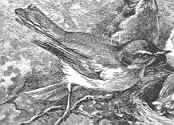http://www.saveandread.com/blog/?p=847
as recently as today I found the following:
The Orthodox church uses the same formula to calculate Easter, but bases the date on a slightly different calendar—the Julian calendar instead of the more contemporary Gregorian one, the calendar that is most widely used today. Consequently, both churches only occasionally celebrate Easter on the same day. Unlike the Western Church, the Eastern Church sets the date of Easter according to the actual, astronomical full moon and the actual equinox as observed along the meridian of Jerusalem.This can be broken into two statements: (1) The Orthodox churches use the Julian computus, and (2) the Orthodox churches use precise astronomical computations.
These two statements contradict one another. One who sets the date using the Julian computus cannot at the same time set it using precise astronomical computations. And only occasionally do the two methods give the same result.
The statement that the eastern churches use precise astronomical computations derives from an agreement reached at a 1923 synod of eastern Orthodox bishops. Here is the report as it appeared in a standard reference work, the Explanatory Supplement to the Astronomical Ephemeris and the American Ephemeris and Nautical Almanac.
At a meeting of a Congress of the Orthodox Oriental Churches held in Constantinole in May, 1923, the Julian calendar was replaced by a modified Gregorian calendar...[in which] Easter is determined by the astronomical Moon for the meridian of Jerusalem.This statement from the Explanatory Supplement is literally true. The Julian calendar, including its computus (also called a "paschalion") was replaced at the meeting in 1923. But it was never permanently replaced in practice anywhere else. Only the solar part of the 1923 calendar agreement has been put into effect, and even that has been controversial. Presumably the bishops, when they got home, found that the Julian computus (which was to be replaced by the lunar part of the 1923 proposal) was too old and traditional to change easily. Amost all the eastern Orthodox churches still use the old Julian paschalion. The reported exceptions are small dioceses such as Finland, which use the Gregorian computus.
However, some folk reading the report in the Explanatory Supplement with no knowledge of eastern Orthodox cultural politics appear to have naively assumed that what the eastern bishops decided had but put into effect. Hence was born the statement that the eastern churches use precise astronomical computations to set the date of their Easter, a statement that has taken on a life of its own and continues to be repeated, even though a simple check against astronomical facts could show that it is false.
In 2003, for example, the vernal full moon occurred at 16 April 19:36 Universal Time. The following Sunday was April 20th. This was Easter according to astronomical reckoning. The Gregorian Paschal Full Moon for 2003 (the 9th year of the 19-year cycle) was also April 16th, the same day, at least for some time zones, as the astronomical full moon. The Julian Paschal Full Moon that year was, however, on April 20th (Gregorian). Hence eastern Orthodox Easter that year was on the following Sunday, April 27th.
In 2006 (the 12th year of the 19-year cycle), the vernal full moon was at 13 April 16:40 Universal Time. The Gregorian Paschal Full Moon for year 12 is also April 13th. The following Sunday in 2006 was April 16th. However, the Julian Paschal Full Moon that year was not until April 17th Gregorian, so that eastern Orthodox Easter was the following Sunday, April 23rd Gregorian.
Some who try to explain these dates away might fall back on another canard, the Zonaras Proviso. They might try to claim that this proviso requires eastern Orthodox Easter to fall entirely outside the seven scriptural days of Unleavened Bread as computed in the present-day Rabbinic calendar. But a simple check will show that this year, 2011, the Hebrew calendar's week of unleavened bread runs from April 19th through April 25th. (Some in the diaspora will add an extra day, April 26th). Eastern and western Easter, however, are both on April 24th, 2011, within the Rabbinic calendar's days of Unleavened Bread. Hence the Zonaras proviso, even if it existed (in fact it does not except in the minds of canon lawyers) could not have this precise form.



2 comments:
Well, I ran across this a bit late. As always things are a bit more complex. Dating of Easter (Pascha)In The Orthodox Church.
"Another factor that figures prominently in determining the date of Pascha is the date of the Jewish Passover. Originally, Passover was celebrated on the first full moon after the vernal equinox. Christians, therefore, celebrated Pascha according to the same calculation - that is, on the first Sunday after the first full moon following the vernal equinox. The correlation between the date of Pascha and the date of Passover is clear. Our Lord’s death and resurrection coincided with Passover, thereby assuring a secure point of reference in time. ... Most Christians eventually ceased to regulate the observance of Pascha by the Jewish Passover. Their purpose, of course, was to preserve the original practice of celebrating Pascha following the vernal equinox.
Not sure what you intend by your comment. The passage you cite, as you quote it, seems to refer to the early history of the computus, and if so it does not qualify or contradict anything I wrote in my post.
Post a Comment